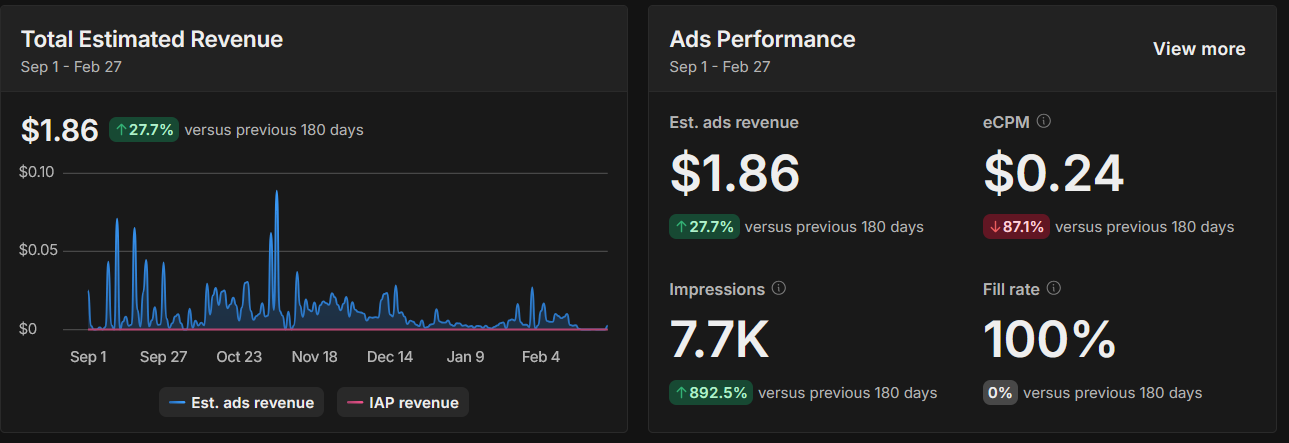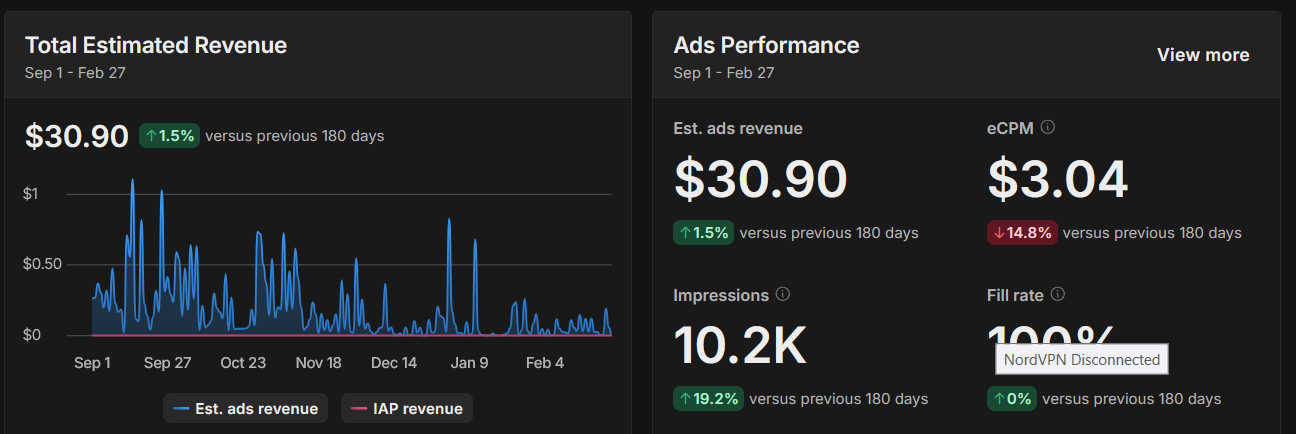Why Advertising Doesn’t Work in Africa ?
It’s the beginning of another month, and as always, we take a step back to reflect on the business landscape in Africa. Today, let’s talk about something that should be booming but isn’t—advertising.
For most industries worldwide, advertising fuels growth. It funds game studios, record labels, and film productions. The primary business model used on the Internet is advertising. In Africa, however, advertising is broken. It simply doesn’t deliver the revenue needed to sustain the creative economy. But why? And more importantly, how do we fix it?
Grab a cup of coffee ☕ and a croissant 🥐, and let's get down to business.
The problem
Look at the following two images, what do you see? The first shows advertising revenues in Africa, and the second in Europe precisely in France.


The simple answer is that for a similar number of views, advertising generates 26 times more revenue per view in Europe than in Africa. This discrepancy has implications for the entire monetisation value chain in Africa and creates such a gap that it forces us, in our work to create the value chain, to take a step to the side.
The Global Creative Industry Thrives on Ads
Let’s look at the numbers. In 2023:
- The gaming industry generated over $400 billion, with ad-based revenue models contributing a significant share. Mobile game ads alone made over $150 billion.
- The music industry earned $26 billion, with 15% of revenue coming from advertising.
- The film industry saw $45 billion in global box office revenue, but streaming platforms earned $140 billion, much of it from ad-supported models.
In these industries, ads allow users to enjoy content for free while companies generate massive revenue. It’s a win-win—at least outside Africa.
If you remember, in our previous newsletter, we mentioned the figure of 89% of users who didn't want to pay. In Europe and the US, those who do buy are between 1 and 2%, and the rest are monetized with advertising. In Africa, advertising as we know it doesn't work... No, in 2025 it technically exists but doesn't generate as much as it should.
Why Advertising Fails in Africa ?
I remember when I was a kid in the early 2000s, in Central African Republic, I could watch a lot of ads for films and games on Western channels, but it was extremely difficult to access the products I saw on TV. Street billboards were the only ones offering products that were easy to find, then radio was used to repeat and push the awareness campaign.
Recently, with the arrival of online mobile money payments, it's now possible to advertise on Facebook or Google and reach customers, but on the creator's side, monetization is still difficult because of the many barriers.
Africa’s market is unique. The traditional ad models that work elsewhere often fall flat here. Let’s break down the problem:
1. Billboards: Expensive but Ineffective
Everywhere you go in African cities, you see towering billboards. They dominate the skyline, but do they convert? Not really. Most billboards rely on broad messaging, making them hard to track in terms of effectiveness. For smaller businesses, they’re simply too expensive.
A billboard for one month in a poor country like the Central African Republic costs $500 a month. In Dakar or Cape Town, more developed cities, it can cost from $750 to $1500.
These ads are very effective in raising awareness, but have a derisory impact in terms of conversion. In 2018, when I made my first game, I deployed a few billboards in one country. This just increased awareness, but didn't convert into downloads.

2. TV Ads: A Fading Giant
According to Kantar's Africascope 2023-2024 study, 91% of Africans aged 15 and over watch television every day. So, TV is still very popular in Africa because of the cost of the Internet, which doesn't allow for a radical change like in Europe.
TV advertising in Africa remains a dominant force, but it doesn't monetize the creators. Also, it's pretty hard to track their performance.
For example, we're about to launch an advertising campaign with Trace TV in 10 African countries, with QR codes to be scanned in the ad to arrive directly on Gara.
While this is good for us and can help increase startup awareness and visits, few creators or companies can afford it. Also, we have a monetization machine that can convert these people, which is not the case for most developers.
3. Online Ads: Expensive but Not Profitable
Online ads should be Africa’s savior, but they’re failing for several reasons:
- Low CPMs (Cost per Mille) mean African audiences generate less revenue per impression than audiences in Europe or the U.S.
- A very informal economy, so few companies buy advertising.
- Most developers can't access ads APIs because they don't have a legal entity or bank account.
In short, advertising is either too expensive, ineffective, or both. And this leads to the biggest problem—the 89% of users who don’t pay for content.
Gara’s Strategy: Monetizing the 89%
For months, we were obsessed by the 89% who didn't buy. This prompted us to set up our own Ads Network, talking to companies to recover part of their advertising budget.
The strategy is to display ads on our own platform first, but also to open up the apis to all developers and other platforms to ensure a constant volume, then open a SAAS so companies can buy ads without having us in front. In this way, we solve the advertising monetization problem for creators who can generate a little money and make us the advertising network for the creative industries.
Here’s our plan:
1. Building Africa’s First Effective Ad Network for Creative Industries
We ended up developing our own ad network specifically for the Creative and Cultural Industries (CCI). This means:
- Lower ad costs for businesses.
- Better targeting using localized data.
- Monetizing free users without harming user experience.
We started with the companies that already pay for ads on YouTube, like XXXXXXX or XXXXXXXX in Côte D’Ivoire. Then, to all the intermediary companies, often without legal existence, we're going to offer them advertising space and then charge them. These companies represent 80% of the African economy.
2. Creating an SDK for Developers
We’re launching a Software Development Kit (SDK) that allows developers to integrate Gara’s ads seamlessly. This gives creators a way to monetize their games, apps, and platforms effectively—without relying on global ad networks that don’t prioritize African audiences.
In the world, YouTube pays between $3 to $5 per 1,000 views. In Africa, it is less than $0.05. Our objective is to pay around $0.15 per 1,000 views.
We've solved the problem of demand, now we need to solve the problem of supply. If small businesses or individual companies start paying for ads, then we will have cracked the system and unlocked ads in Africa.

The Future of Ads in Africa
Advertising doesn’t pay in Africa—yet. But with the right supply chain, we can change the narrative. By designing an ad system tailored for African realities, we unlock a new economy where content is free, businesses thrive, and creators get paid.
This is what Gara is building—an entire value chain. This wasn't part of our initial plans, but it's the key to making the creative industries in Africa profitable. And we’re just getting started.
Stay tuned and subscribe. 🚀
